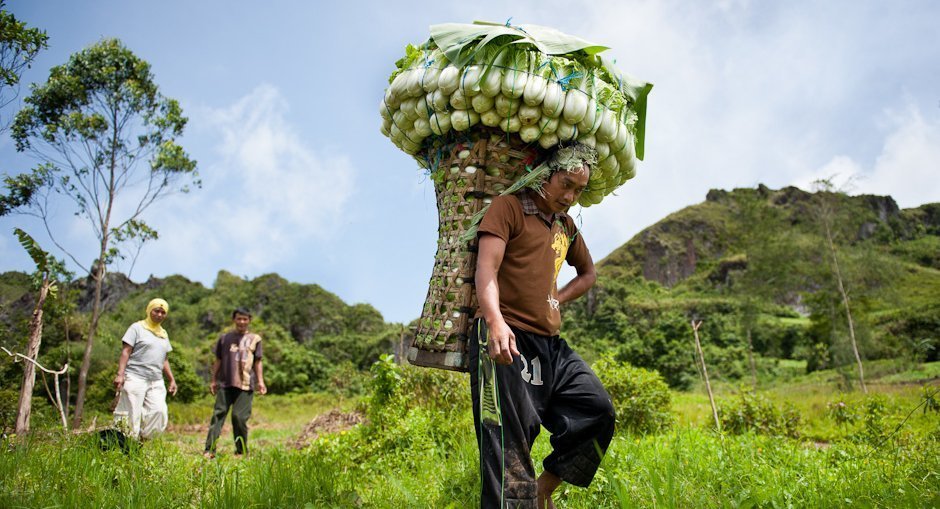I just returned from a two week trip to Isabela province in northern Luzon to document the Agta and Dumagat Indigenous people in the area. Oma and I traveled for three days to reach our destination; starting in Manila we traveled by bus for two days and then took a 15 hour boat ride on a small outrigger full of cargo to reach the towns of Divilacan and Maconacon. These two towns are separated from “main land” Luzon by the Sierra Madre mountains. There are no roads going here and the towns are only accessible by boat or a small plane. The remoteness of the area is what initially attracted me because I was hoping to find something more authentic, something different from other places I have been to in the Philippines.
Getting your camera into the water doesn’t have to entail purchasing an expensive housing that one might think is necessary. I recently did some research on alternatives to hard casings that would allow you to get your SLR camera into the water. I came across a few different companies offering durable plastic casings that I thought I would try out.
I was doing some research recently and decided to see what the small island of Olango had to offer because of its proximity to Cebu. I knew the island had a bird sanctuary that is a popular birding destination, but I wanted to see what else the island might have to explore. While searching through some photos I noticed one image of a women standing next to a giant pile of starfish. The image was striking to me because I had never seen so many dead starfish before. I started to dig a little deeper and was able to find that one barangay in Olango island is known to export seastars, shells, urchins and sand dollars. I decided to go and have a look because I couldn’t believe that starfish in this amount could be harvested and sold. For what? I was thinking.
I have heard numerous times now of a mountain town here in Cebu where the weather is cooler and vegetable farmers carry large baskets of produce on their heads. I have always had a small interest in going to see what this was all about, but a part of me never thought it would be too interesting – vegetables are really not that exciting.
I had a unique experience the other day, when making my way from Dutch Harbor to the small village of Akutan in the Aleutian Islands, Alaska. I was a passenger on the land/water plane called the Grumman Goose. There are not too many of these made anymore (since WWII), and they are especially useful here where the plane must land without a runway. The flight was only about 20 minutes once airborne, but it was a beautiful trip. The pilot let me sit in the co-pilots seat up front (which was a first for me) and that gave me the best view to try and take some pictures.
Winter is officially here and what a great way to start the season…with a lunar eclipse on a clear, cold night. The snow and cold weather has been a nice change for me and I’m looking forward to getting out and enjoying it during the next few days. I have been getting on and off fishing boats for the past six weeks and I finally have a few days off to enjoy the snow and outdoors.
I’m back in Dutch Harbor after being out at sea for the past month and a half. I have been observing on long-line commercial fishing vessels fishing for Pacific Cod in the Bering sea. It was a long time out and I must say it’s nice to be back on land. I wanted to share some more images from this beautiful part of the world where bald eagles and rainbows can be found on any ordinary day.
I arrived into Dutch Harbor, Alaska yesterday after spending the last month in Anchorage. I am doing a short term job working as a fisheries observer aboard commercial fishing vessels here, and will be off on a long-liner fishing for Pacific Cod in the next day or two. Many of you may be familiar with Dutch Harbor from the TV show the “Deadliest Catch.”
I recently returned back from a ten day trip to Mindanao earlier this week. The second half of my trip took me to the southern part of Mindanao, mostly in the Soccsksargen region (This name is an acronym that stands for the region’s four provinces and one of its cities: South Cotabato, Cotabato, Sultan Kudarat, Sarangani and General Santos City).
Jacob Maentz is an American travel and stock photographer based in the Philippines. He came to the country as a U.S. Peace Corps Volunteer in 2003. Jacob’s two year service gained him an admiration for their culture and different way of life. He grew up close to nature and has an academic background of Wildlife and Conservation Biology.
email: [email protected] |
© 2026 Jacob Maentz


